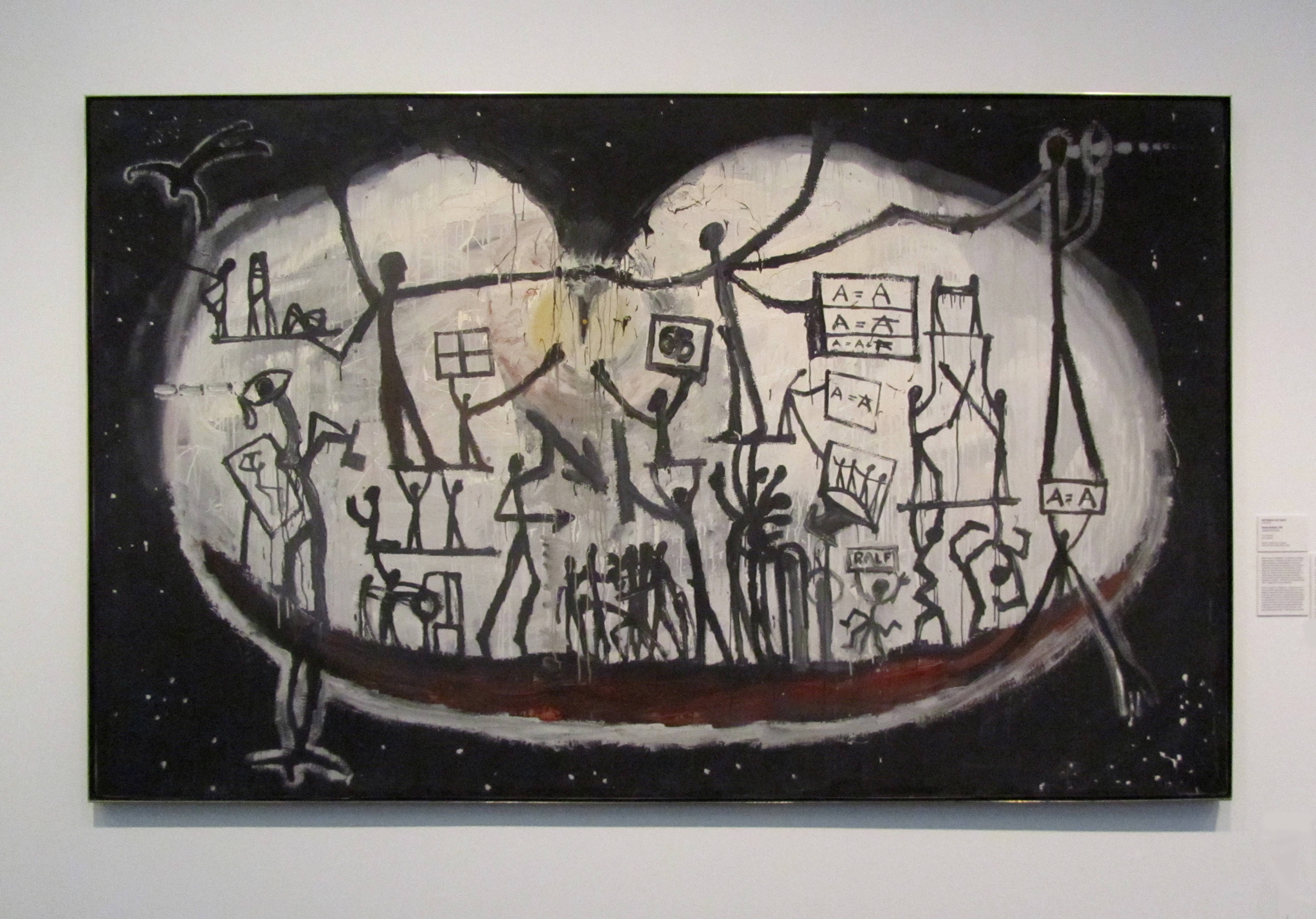
A.R. Penck: „Ich aber komme aus Dresden (check it out man, check it out).” at the Albertinum, Dresden
21. October 2019This year, A.R. Penck, who died in 2017, would have turned 80. In his hometown of Dresden, the Albertinum has now dedicated an exhibition to him that will focus on his work until his departure from the GDR in 1980 – the unknown Penck, so to speak.
Not officially recognised as an artist in the GDR and thus excluded from the art scene, he nevertheless achieved artistic success in West Germany from 1968 onwards, thanks to his Cologne gallerist, Michael Werner. Penck’s works – those that Werner couldn’t smuggle across the border – were barred from display in the state-organised exhibitions and were therefore only accessible to a very limited audience.
Through an impressive selection of early paintings, drawings, prints, group work, music, Super 8 films, artist books, texts and sculptures, it is finally possible for a wider audience to explore Penck’s beginnings and approaches in detail.
This exhibition is an adventurous expedition through Penck’s almost unmanageable oeuvre. The paintings are arranged chronologically. Partition walls were deliberately omitted in order to make it easier for visitors to immerse themselves in the various stations presenting artist’s books, texts, sculptures, music and film. Everything seems to be interwoven. Just as Penck worked across different media, visitors can embark on a multimedia journey of discovery.
The exhibition begins with a series of paintings of the classical subjects portrait, still life and nude, in which the influence of Picasso and van Gogh are clearly discernible. These works date from the 1950s, when Penck made his first contacts with other artists at the Volkshochschule. They were soon meeting privately for artistic experimentation.
Collaboration and exchange with other artists would remain important for Penck in the years to come. For although he was not allowed to study at any art academy, despite several applications, and was not allowed to become a member of the Verband der Bildenden Künstler (Association of Artists), he was firmly integrated in the Dresden art scene – in the underground scene, at least.
In 1971 he is a founding member of the artist group Lücke (gap, void). The authorities are not amused. This period is very well documented in the exhibition, both by group paintings and by Super 8 films. Eventually, in 1976, the group broke up, partly because of the massive obstruction caused by politics and spying – and partly simply because the project was artistically exhausted. Two years later, Penck co-founded the Obergrabenpresse, which is also represented in the exhibition.
Early world and system pictures can be seen, e.g. Großes Weltbild (Large World Picture) from 1965. In its reduction of colour, and its reduction of the figure to a stick figure, it is an example of Penck’s new pictorial language, which does not seek to value, but to analyse and clarify structures.
Several self-portraits, in which the artist enacts ever new roles and characters, are spread throughout the exhibition. This attraction to changing identities would be continued in the frequent change of pseudonyms. He was born Ralf Winkler, but from the 1960s onwards he signs his works A.R. Penck. Later, he also calls himself Mike Hammer, TX, y, and α, among others.
However, some of the highlights of the exhibition are the 17 Super 8 films, which will be shown here for the first time to this extent. The themes of the films are widely varied and range from street scenes of 1970s Dresden to artist friends, an art auction and the founding event of the Lücke artist group. In these films, as in his other works, it becomes clear that Penck perceived the world as a large space of signs in which everything was given a deeper meaning. His cinematic oeuvre ended with his departure from the GDR in 1980 and was almost forgotten.
The artist’s books also deserve special mention. As in other areas, Penck’s main focus is on communication and information. He compares images and texts and creates his large standard system. The majority of the artist’s books have been digitised, so the visitor can effectively witness the emergence and development of a Penck idea while leafing through them.
The artist’s books have developed from various materials, such as order pads, writing pads or account books. Penck is not choosy when it comes to his selection of media, as can be seen in his paintings: kitchen cupboard doors, cardboard, blankets – everything is acceptable. In a very subtle way, this shows that breaking conventions and rules is simply part of Penck’s work.
There is a lot to see and hear in this exhibition. Fascinating references ease access to Penck’s complex work and make it even more interesting.
The exhibition can be seen from 5 October 2019 to 12 January 2020 at the Albertinum, Dresden.
Further information can be found here.
